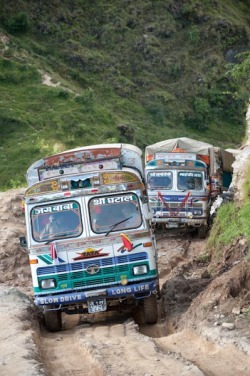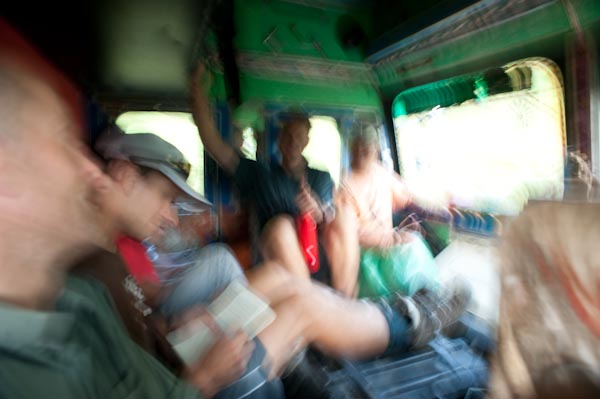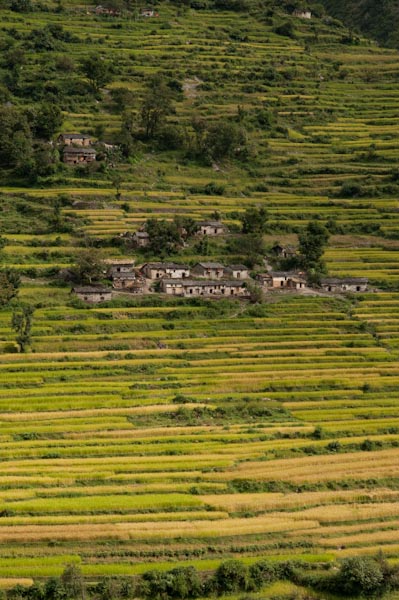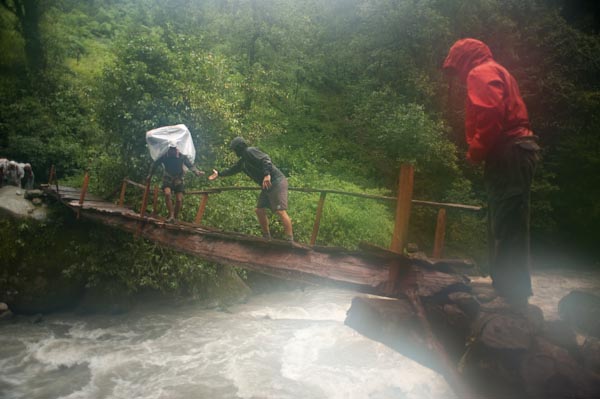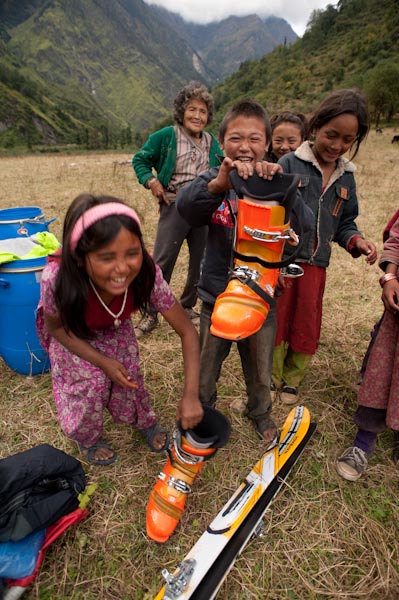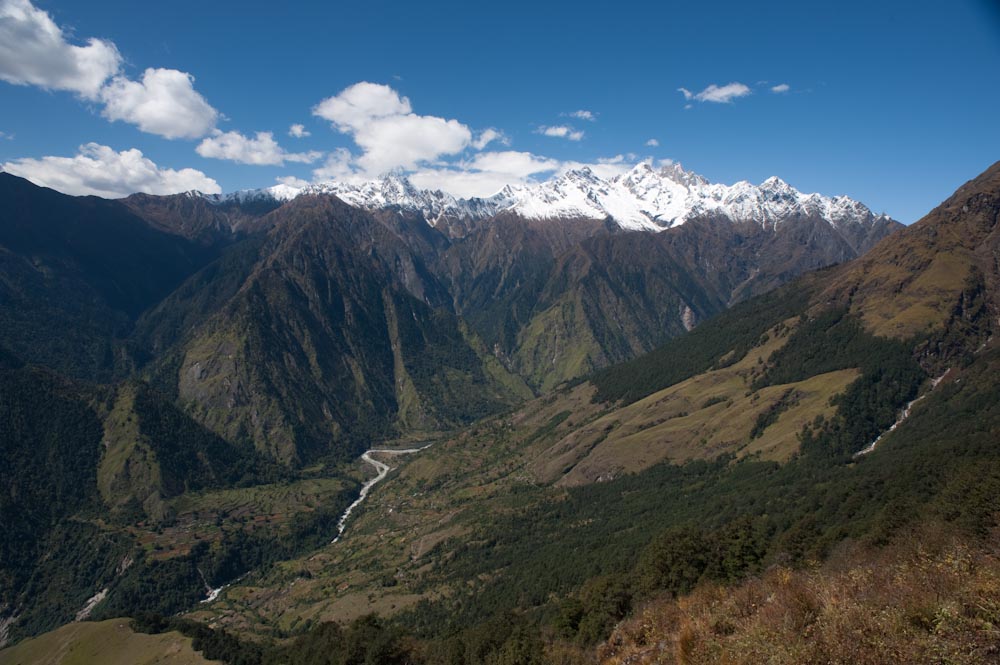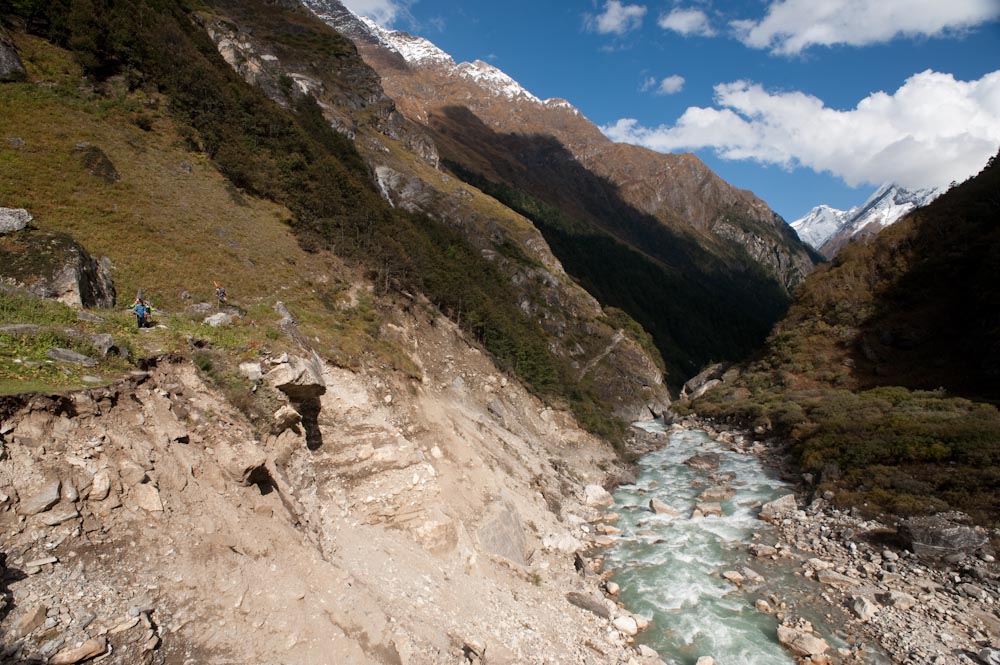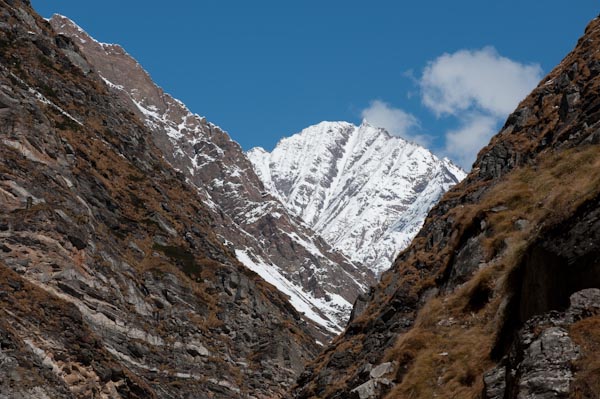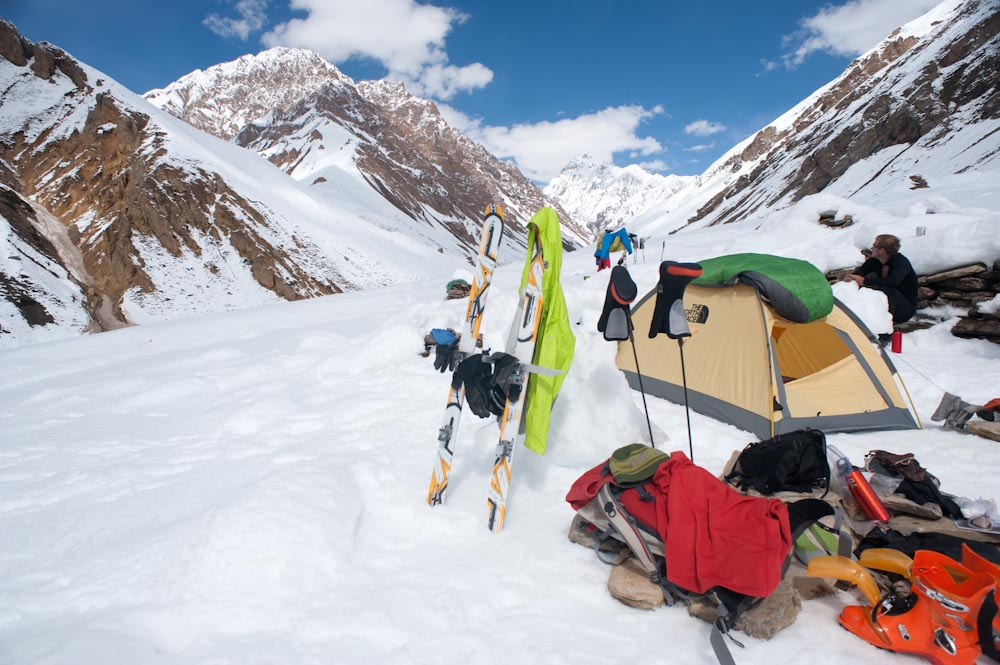Skiing Rakse Peak
(Part 5 of Skiing Rakse Peak in Nepal’s Bajhang District)
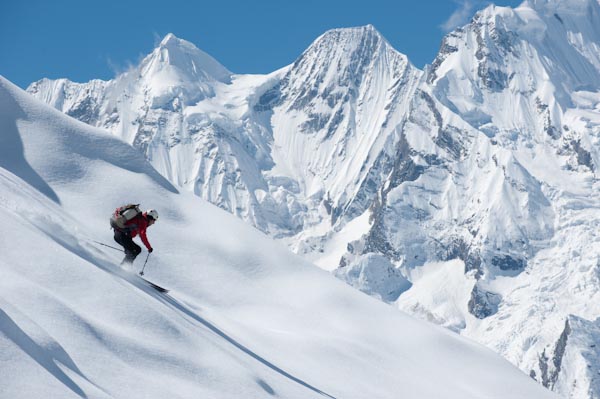
We needed to learn more about Rakse Peak. We knew it was across the Seti from usand the only way across was to wade. We also knew it had a large south facing couloir off the top but we couldn’t see the bottom. Our first day out we decided to climb up towards the shoulder of a peak above our camp at Garaphu Odar which would give us nice views of the valley. The recent storm left snow down to 4000m providing us with a spring like snow pack, excellent for booting and corn skiing. By mid morning we had booted to 4700m but were stopped by a series of rocky slabs. From our vantage point we enjoyed the views in all directions and learned a bit more about what we would need to do in order to climb and ski the peak rising above Rakse Tal. The best part of this day was the ski back to camp; 3500ft with powder dusting a firm, refrozen corn surface, views of majestic peaks in every direction and the sun was shining.
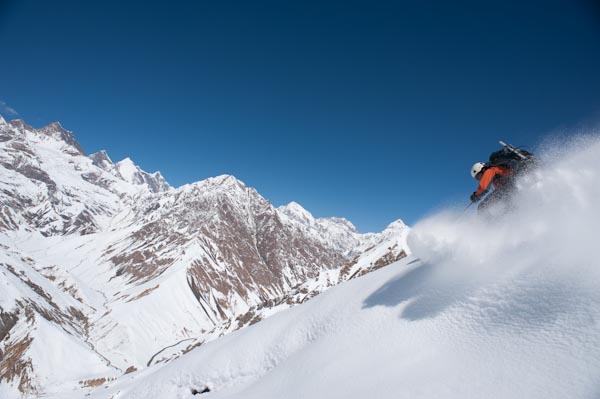
The following day we waded the Seti river not far from our camp and moved our tents to a camp at 4000m and better striking distance of the large couloir on the south side of Rakse Peak. The move was a bit of a gamble, since we couldn’t see the bottom two thirds of the couloir I didn’t know if it would connect, but we felt it represented the greatest chance of making a complete descent of a virgin peak given our limited time frame. That evening we hiked to a vantage point where we saw that the entire couloir did in fact go all the way from the top of Rakse Peak back to our high camp for a total distance of 1500m.
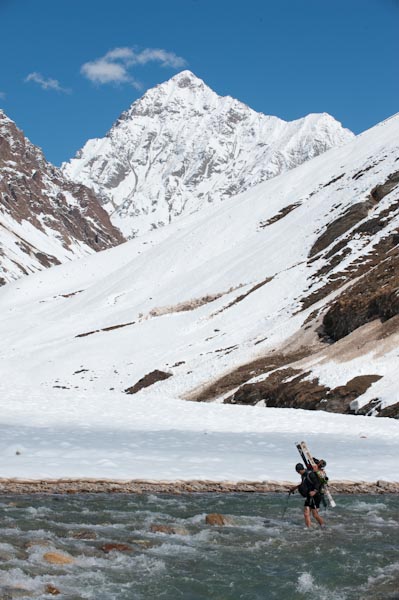
Under a moonless night, Jamie, Kip and myself walked out of camp and booted up firm snow and avalanche debris to the tightest section of couloir. Just as the partially cloud covered sky broke apart the first rays of the sun began to shine through, a minute later the clouds swirled around and it became grey. The first section of the couloir was extremely rocky. Avalanches had swept the couloir in recent weeks leaving a 100m section of the couloir bone dry and dirty. While the couloir itself was aesthetic the conditions were shaping up to be less than desirable. We continued up the couloir on firm neve snow, booting between the steep rock walls on both sides, occasionally dodging small bits of rock rolling down the gut. We were juggling a fine line of wanting warmer conditions to soften the snow but those same conditions would also unleash stones onto us. The firm icy surface made the runnel we followed to the top good for climbing but it was going to be difficult to ski if it remained icy. As luck on this trip seems to go, cloud cover kept rock fall to a minimum but left the couloir desperately firm for skiing conditions. At the top of the couloir we crested onto a ridge a few meters from the summit and could finally see Rakse Tal. We could see peaks in every direction and especially north as peaks formed along both sides of the Tibetan border.
 The temps were cold and windy with clouds continuing to move closer towards the peak. Any snow falling became a constant spindrift of moving snow and ice down the couloir. We snapped a few token shots and mounted our skis to start down the icy and breakable snow. The effort in making sure the difficult conditions didn’t get the best of us kept us on our toes and at times we were forced to sideslip through an icy section that screamed from the chatter of scratching edges on the surface. The steepest section was at the top and just less than 55 degrees but often we were forced into the couloirs gut where a groove made conditions even more challenging. Once through the couloir and the short section of dirt we were skiing on the lower angled terrain that created the apron of the giant 5000ft south face. Much of the lower face was easy skiing; bobbing and weaving through old avi debris sections. Skiing into camp we all felt as though we had gotten away with something. So far obstacles had been greater than we had anticipated, but through each hurdle we eventually found a new way and after all, an adventure was what we had hoped to find.
The temps were cold and windy with clouds continuing to move closer towards the peak. Any snow falling became a constant spindrift of moving snow and ice down the couloir. We snapped a few token shots and mounted our skis to start down the icy and breakable snow. The effort in making sure the difficult conditions didn’t get the best of us kept us on our toes and at times we were forced to sideslip through an icy section that screamed from the chatter of scratching edges on the surface. The steepest section was at the top and just less than 55 degrees but often we were forced into the couloirs gut where a groove made conditions even more challenging. Once through the couloir and the short section of dirt we were skiing on the lower angled terrain that created the apron of the giant 5000ft south face. Much of the lower face was easy skiing; bobbing and weaving through old avi debris sections. Skiing into camp we all felt as though we had gotten away with something. So far obstacles had been greater than we had anticipated, but through each hurdle we eventually found a new way and after all, an adventure was what we had hoped to find.
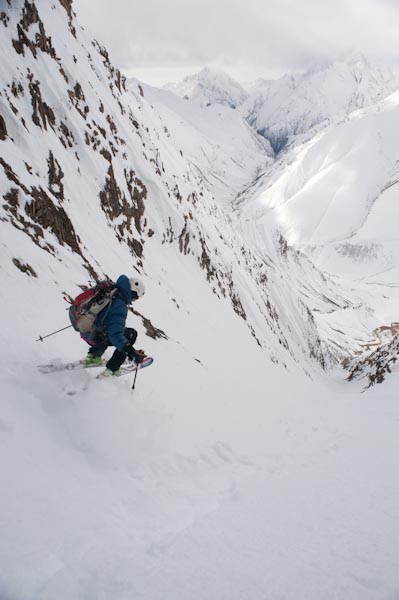
The next morning we packed up camp, waded across the Seti again and started our journey back to base camp. Like horses heading for the barn we were back to base camp in the two days we had planned. We were all tired from the efforts of freight handling and skiing Rakse Peak, although we were now on our way home we were far from done. Our new porters had new ideas on which way they wanted to return to Chainpur. Feeling up for the adventure, we followed a woodcutter’s trail up and over a high mountain pass which lead us back to Chainpur in two and a half days, a record compared to the six it had taken to reach base camp. Once in Chainpur the locals informed us that during the storm that had slowed our progress on the approach, the road back to Dhangadi had been washed out in eleven places requiring heavy machinery to open it. Five days, maybe ten days, maybe even several weeks would pass before the road would open again. Luckily for us Jiban at Sherpa Shangri-la Treks was able to book us a charter flight out from that field of grass near the end of town. We spent our last night in the Bajhang District camped in the bombed out airport thinking back to all that we had endured to make a few tracks down a virgin peak in one of the wildest places on earth. With our charter flight we would be back in Kathmandu only four days after leaving Dhuli when it had taken us nine to reach there on the way in.
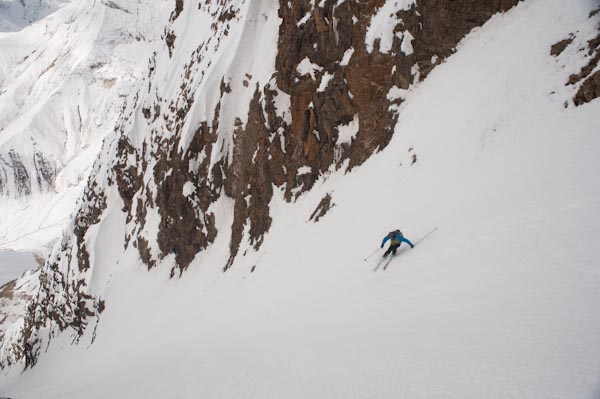 Skiing in the Himalaya is never typically about finding the best turns but rather more about the adventure of getting to top of a particular mountain and enjoying the few turns back down. For me, skiing a new line on a peak that no one has climbed represents the highest level of commitment for ski mountaineering and something I will continue to seek with future adventures. Our trip to the Wild Wild West of Nepal’s Bajhang District was more than an adventure. Now I just need to figure out when to go back. Adventures like this aren’t possible most places in the world.
Skiing in the Himalaya is never typically about finding the best turns but rather more about the adventure of getting to top of a particular mountain and enjoying the few turns back down. For me, skiing a new line on a peak that no one has climbed represents the highest level of commitment for ski mountaineering and something I will continue to seek with future adventures. Our trip to the Wild Wild West of Nepal’s Bajhang District was more than an adventure. Now I just need to figure out when to go back. Adventures like this aren’t possible most places in the world.
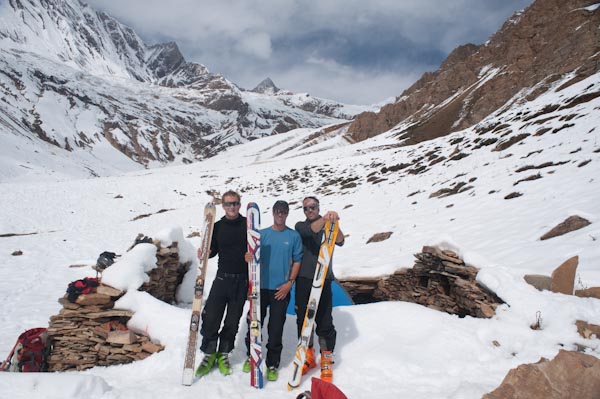
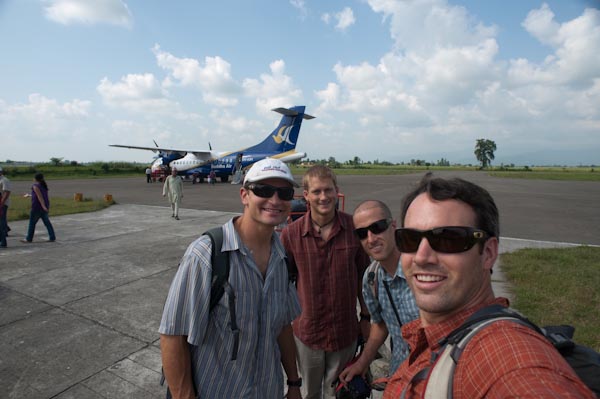
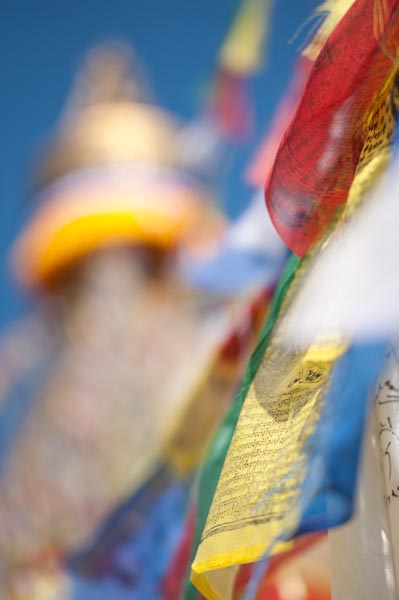
 Kristoffer Erickson
Kristoffer Erickson
